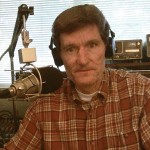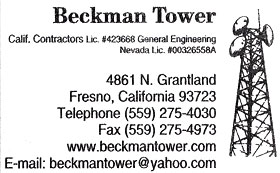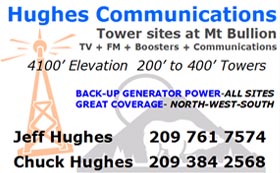
Dennis Thompson
Because of the recent PG&E outages, I hope you are not reading this by candle light . . .
Thanks to Gary Cocola and Steve Dresser for alerting me to a great and informative website called the history of analog UHF television Broadcasting (Those channels above 13 that almost no one could receive). A world of fascinating information born from an article written by Mike Dorner, Jr. in the May 1977 issue of VHF-UHF Digest, published by the Worldwide TV-FM DX Association. Then verified and enhanced by Los Angeles-based radio programming consultant K.M. Richards who undertook a complete review of the Dorner list, verifying and correcting entries, as well as adding dozens of stations. Here is a L I N K to the website that pays tribute to the pioneering UHF broadcasters who made television as we know it today possible. I’m sure you’ll enjoy it as much as I did. For now, read on for a few snippets of the great history you’ll find at the site.
– – – – – – – – – – – – – – – – – – — – – – – –
We would also like to pay tribute to the true UHF pioneers … the 16 stations that got their original first-year construction permits on the air within the required eight-month construction period, and stayed there, through thick and thin, without ever going dark or jockeying for a lower channel number. The call letters may be different on many of them now, but here are the longevity champions, listed by channel, with their original calls from 1952-53 and current calls:
 |
WTAP-TV Parkersburg WV |
 |
WTVP (WAND) Decatur IL |
 |
WCOV-TV Montgomery AL |
 |
WICS Springfield IL |
 |
WGBI-TV (WYOU) Scranton PA |
 |
KMJ-TV (KSEE) Fresno CA |
 |
WKBN-TV Youngstown OH |
 |
WKOW-TV Madison WI |
 |
WBRE-TV Wilkes-Barre PA |
 |
KAFY-TV (KBAK-TV) Bakersfield CA |
 |
KIMA-TV Yakima WA |
 |
WKNB-TV (WVIT) New Britain CT |
 |
WKJG-TV (WISE-TV) Fort Wayne IN |
 |
WSBA-TV (WPMT) York PA* |
 |
KJEO (KGPE) Fresno CA |
 |
WLBC-TV (WIPB) Muncie IN |
(by K.M. Richards)
It probably seemed like a good idea at the time.
In the late 1940s, residents of Fresno and the surrounding area — then as now, the major population center in the San Joaquin Valley region of California — were going to great lengths to watch that new-fangled invention television via the VHF stations on the air in Los Angeles. Doing so required an expensive high-gain receiving antenna on a tall tower, aimed at Mount Wilson in the San Gabriel Mountains (about 200 miles away), coupled with a good receiver, and patience for those times when atmospheric conditions or man-made interference disrupted reception … usually when you wanted the stations most. Still, for those with the right equipment and attitude, all four networks were available for viewing. And with the 1948 “freeze” on new television station construction, with the FCC’s assurance that they were formulating a plan to bring TV to nearly every corner of America, there was great hope in Fresno that someday distant reception of the Los Angeles stations would be replaced by clear, interference-free reception of local stations providing the same network programming.
 |
Enter the Anderson family. Patriarch Herman Anderson had put KCOK/1240 in Tulare (about 45 miles to the southeast of Fresno) on the air in late 1945, followed in 1949 by the acquisition of KAFY/550 in Bakersfield, another 15 miles down U.S. Highway 99. His son Sheldon was manager of both stations … a good choice, given his experience since 1935 at stations in Bakersfield, Redding and Fresno before tackling the initial construction of KCOK. The family watched developments in Washington DC with great interest, noting in 1951 the FCC Third Notice of Further Proposed Rulemaking’s inclusion of a table of allocations which assigned channel 3 to Visalia, a mere nine miles to the northeast of Tulare. Despite Herman’s passing away after a long illness on the last day of October, Sheldon filed on January 30, 1952 for that channel, no doubt hoping it would survive the final hearings and remain available for grant.
Alas, by the time the Sixth Report and Order was released the FCC had decided that a better use of a channel 3 allocation was to assign it in both Santa Barbara and Sacramento rather than Visalia, and it was replaced in the final table by UHF channels 43 and 49, but Tulare itself had gained its own assignment of channel 27 — immediately adjacent to one of Fresno’s allocations of channel 24 — and with his original application now moot, Sheldon filed in July for it … and quickly found himself caught between a rock and a hard place. In 1948, he had purchased a 15% interest in Fresno’s KYNO/1300, but when that station’s majority owners decided to file for channel 47, the overlap with the proposed channel 27 signal was impermissible. Fortunately, his father’s will called for him to assume full ownership of the Tulare and Bakersfield radio stations, and when the FCC approved the transfer in March 1953 Sheldon wasted no time in divesting his stake in KYNO (which would have caused further legal difficulties as he went from 15% to 100% ownership of KCOK anyway).
Continue reading this fascinating piece of Central Valley broadcasting history H E R E


